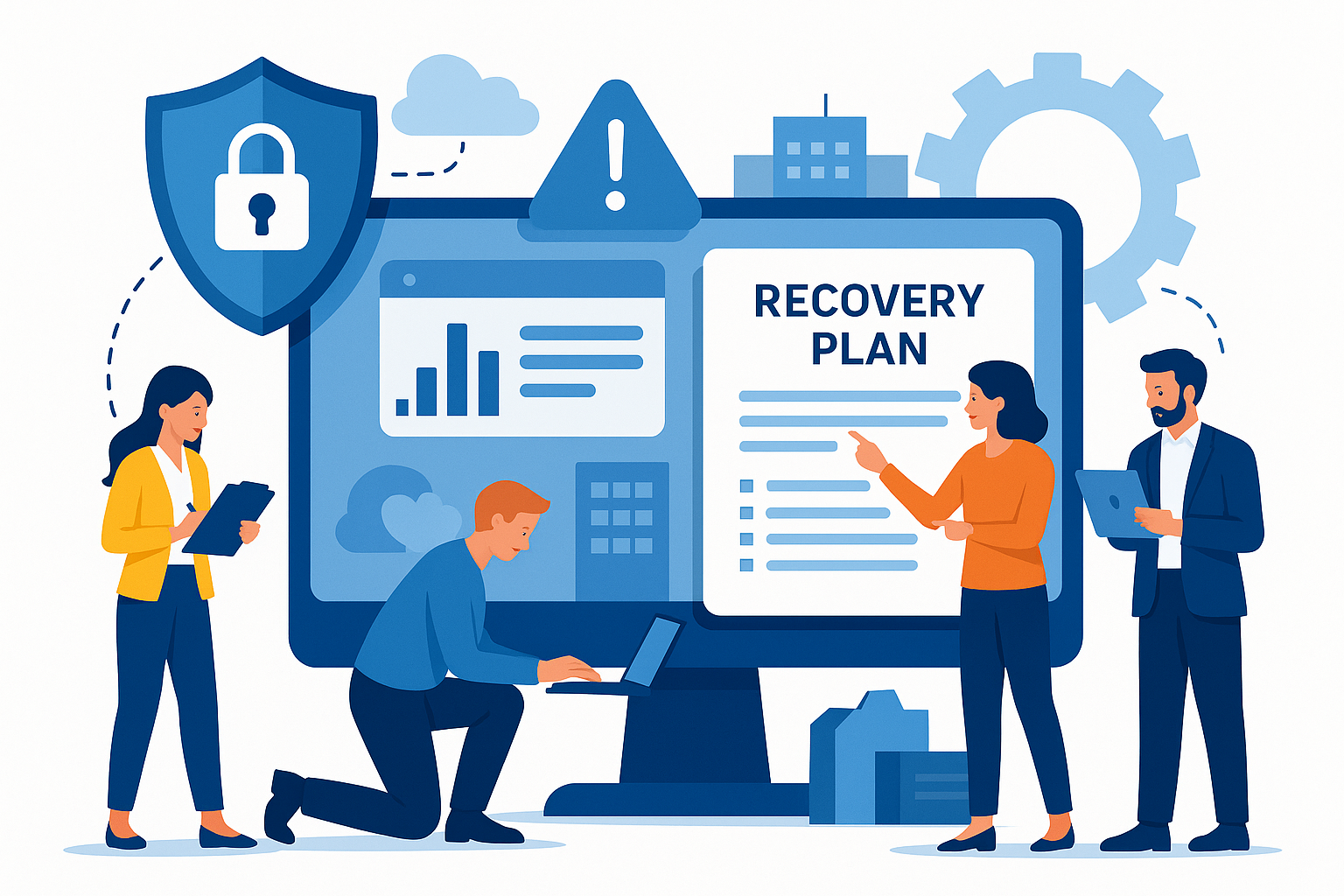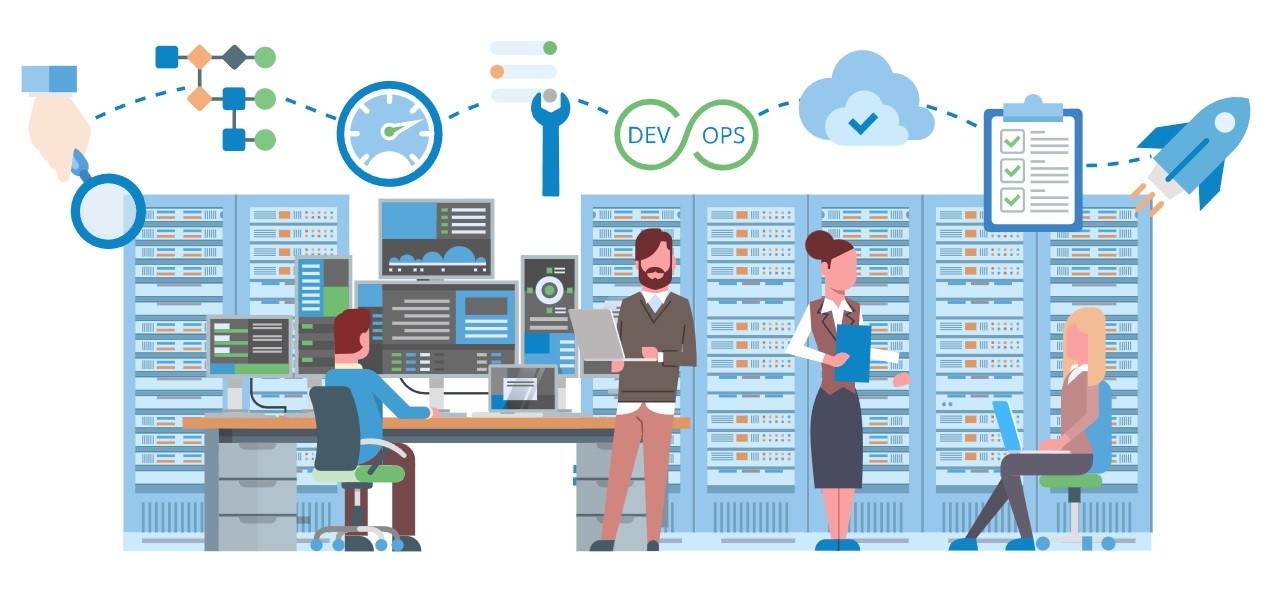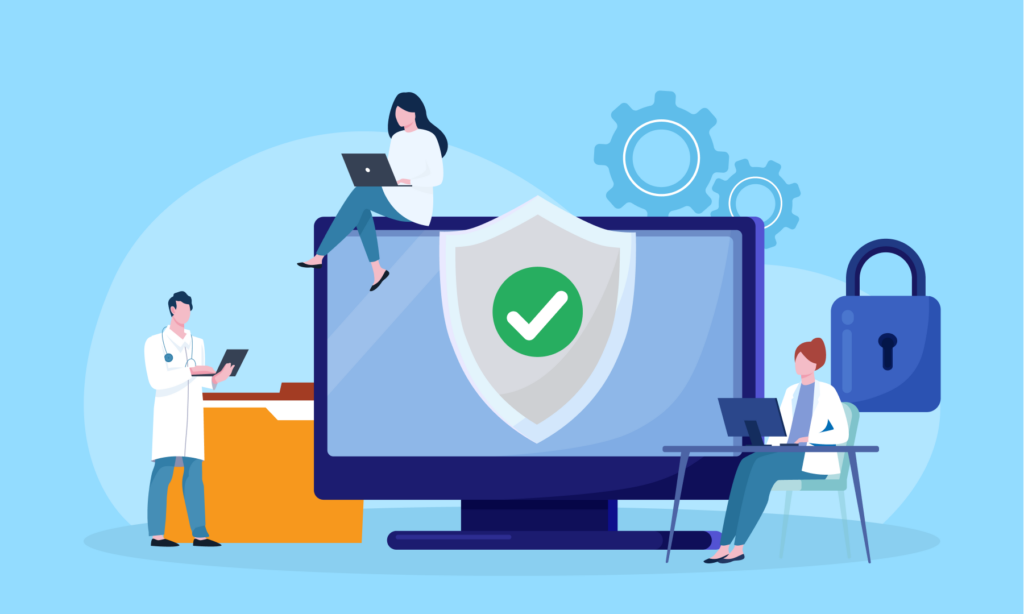Why IT Budgets Must Align with Business Goals
Each year, organisations allocate significant investment toward their IT budget — often without asking the most important question: How is this spend aligned with what the business actually needs to achieve?
Too often, IT budgets are built around legacy systems, reactive fixes, or internal wish lists from the IT department. While these items may be valid, they don’t always reflect broader business priorities. The result? Misaligned technology investments, stagnant initiatives, and leadership frustration.
At Beyond Technology, we’ve worked with businesses across sectors who found themselves in this exact situation. Budgets were being spent, systems were being maintained, but measurable progress toward strategic business goals remained elusive. In these cases, it wasn’t more spend that was needed — it was better alignment.
This article explores how aligning your IT budget with business goals leads to smarter decisions, stronger returns, and greater strategic impact. We’ll also share how Beyond Technology helps organisations make this shift, ensuring IT investments are no longer a sunk cost — but a lever for real business growth.
Key Takeaways
- IT budgets that are disconnected from business priorities lead to inefficiencies, wasted resources, and missed opportunities.
- A business-first approach to IT budgeting enables more strategic investments and clearer ROI.
- Aligning IT spend with organisational goals requires collaboration between IT leaders and executive stakeholders.
- Beyond Technology helps organisations review, restructure, and prioritise their IT budgets to maximise business impact.
- Proactive alignment improves financial performance, supports long-term strategy, and ensures technology is working for the business — not beside it.
Summary Table: From IT Spend to Strategic Value
| Challenge | Common Pitfall | Beyond Technology’s Solution | Business Impact |
| Misaligned IT budget | IT investments made in isolation from broader business goals | Business-first budgeting approach aligned with strategic objectives | Clearer ROI, improved business outcomes |
| Reactive IT spending | Budget driven by support tickets or legacy system demands | Structured IT budget planning tied to long-term growth priorities | Less waste, more strategic initiatives funded |
| Lack of visibility across departments | IT department plans in silos, without input from business units | Cross-functional budget planning with key stakeholders | Unified direction and stronger internal alignment |
| Unclear value from IT spend | Difficulty articulating the business value of IT projects | Benchmarking and performance indicators for IT initiatives | Greater accountability and better funding decisions |
| Underperforming technology investments | Spend focused on tools, not outcomes | Roadmapping aligned with business transformation goals | Smarter technology choices that support scalability |
| Missed opportunities for optimisation | No regular review of IT budget effectiveness | Ongoing assessment and reprioritisation with a focus on efficiency | Continuous improvement, reduced unnecessary expenses |
The Cost of IT Budgets That Don’t Serve the Business
Many organisations still approach IT budgeting as a routine financial exercise — a list of line items to keep systems online and teams functioning, or worse – last year’s budget with new projected added . But when an IT budget is created without planning and clearly aligning to the broader business strategy, it becomes a sunk cost rather than a strategic asset.
In our work with clients across sectors, we often see IT budgets that are reactive: driven by immediate needs, historic spending patterns, or the maintenance of ageing infrastructure. These budgets might cover basic functionality — but they don’t fuel business growth. Worse, they can absorb significant investment without delivering measurable business value.
An unaligned IT budget can lead to:
- Technology investments that don’t solve real business problems
- IT resources spread too thin across low-impact initiatives
- Missed opportunities to fund innovation or scale operations
- Significant expense supporting legacy systems that are no longer wanted
- Cost overruns and unnecessary expenses due to short-term fixes
When IT leaders and business executives operate in silos, the result is often duplicated effort, competing priorities, and systems that are expensive to maintain but slow to deliver.
To truly support organisational success, IT budget planning needs to be business-first — tied directly to goals like revenue growth, operational efficiency, customer experience, and risk management. At Beyond Technology, we help organisations reframe their approach to budgeting so that every dollar invested in technology serves a strategic purpose.
A well-aligned IT budget doesn’t just save money — it helps your business move faster, respond to change more effectively, and stay ahead of the competition.
Rethinking IT Budget Planning as a Business Exercise
IT budget planning is sometimes seen as the sole responsibility of the IT department — but this thinking is outdated and costly. In reality, budgeting for information technology should be a cross-functional, business-driven process, not just a technical forecast of infrastructure costs.
To get full value from your technology investments, the budgeting process must begin by understanding your organisation’s strategic goals and business priorities. That means asking:
- What business outcomes are we targeting this year?
- Where can technology streamline business processes or improve operational efficiency?
- Which areas of the business require the most support to scale or transform?
When IT leaders collaborate with finance, operations, marketing, and customer teams, the result is a more focused budget — one that funds the technology solutions that matter most and directly supports business objectives.
This kind of approach also strengthens cost optimisation. Instead of allocating spend based on historical patterns or vendor relationships, leaders can challenge every line item against real business value. Software licences, maintenance costs, and support contracts are all assessed through the lens of their contribution to growth, customer experience, or efficiency.
At Beyond Technology, we help clients move from siloed budgeting toward a unified, transparent model. This includes mapping every budget request to business goals, aligning funding cycles with planning horizons, and introducing governance frameworks that ensure ongoing accountability.
The outcome? A smarter budget that funds progress, not just operations.
Beyond Technology’s Approach to IT Budget Alignment
At Beyond Technology, we believe the IT budget is not just a spreadsheet — it’s a strategic tool that should directly support your business objectives, operational efficiency, and long-term growth.
Our approach begins with a clear understanding of your organisation’s mission, current-state IT environment, and business goals. From there, we assess your existing IT spend against a set of core alignment principles:
- Does each line item support a defined business priority?
- Are resources being directed to high-value projects with measurable outcomes?
- Is the IT budget enabling or obstructing business growth and innovation?
We work closely with key stakeholders across the organisation — from the chief information officer to finance and operational leads — to establish a shared view of priorities. This allows us to build IT budgets that reflect real-world conditions, not legacy habits or technical wish lists.
Our methodology includes:
- Mapping IT investments to strategic goals using clear planning frameworks
- Uncovering unnecessary expenses that provide limited or no business value
- Modelling cost scenarios to prepare for market shifts and future initiatives
- Aligning budget cycles with broader business strategy and transformation timelines
This collaborative process ensures your IT budget becomes a powerful driver of performance, not just a cost to be managed. By embedding cost optimisation, risk management, and measurable return on investment into every budget decision, we help clients stay ahead of disruption while avoiding unexpected expenses.
We also recognise that budgets must adapt. That’s why we support our clients with regular review checkpoints, providing the agility needed to reprioritise as market trends, regulations, or technologies evolve.
When done well, IT budgeting creates confidence across departments. Leaders know where their investments are going, why they matter, and what impact to expect — all while staying closely aligned to broader business operations and strategic initiatives.
This is how Beyond Technology turns IT budgets into engines of business value.
Building IT Budgets That Scale with Business Growth
For most businesses, growth brings opportunity — but it also brings complexity. Systems need to scale. Support needs to be consistent. Costs need to be predictable. That’s why a strategic approach to IT budget planning is essential for organisations looking to grow sustainably.
At Beyond Technology, we help businesses shift from reactive budgeting to proactive planning — where the IT budget evolves in step with the organisation’s growth targets and business strategy. That means accounting not just for current spend, but anticipating what’s needed next.
When your IT infrastructure, support, and technology investments are planned to scale, you avoid the roadblocks that typically hold businesses back: outdated systems, underfunded upgrades, or gaps in support as new teams or services come online.
Our business-first budgeting approach includes:
- Forecasting technology costs alongside revenue and headcount projections
- Planning for digital transformation initiatives without overcommitting
- Ensuring that key business processes have the right tech support to scale
- Building in flexibility for new technology or changing business conditions
This enables smarter resource allocation, stronger cost control, and more room to innovate — without compromising reliability or compliance. It also gives your IT department the visibility and structure it needs to support broader business initiatives, whether that’s launching into a new market or deploying AI agents at scale to double to productivity of key staff and business processes.
We’ve seen it repeatedly: organisations with aligned IT budgets move faster, scale with less friction, and deliver stronger financial performance. Their systems don’t just support the business — they accelerate it.
By linking IT budget planning directly to business goals, Beyond Technology ensures your investments deliver both immediate returns and long-term capability. Whether you’re planning next quarter or next year, we’ll help you create a roadmap that balances control, agility, and value.
In the end, it’s not just about what you spend — it’s about what that spending enables your business to achieve.
From Static Spreadsheets to Ongoing Value Creation
Traditional IT budgets are often locked into static spreadsheets — produced once a year, approved with little visibility, and then left largely untouched until the next cycle. The problem? Business needs don’t stand still. Markets shift, teams grow, risks emerge, and opportunities arise.
At Beyond Technology, we help clients move beyond outdated budgeting models and adopt an ongoing process that continuously aligns IT spending with business priorities, market conditions, and evolving technology strategy.
Rather than treating the IT budget as a one-time forecasting task, we treat it as a living tool — a strategic instrument for driving business value, not just tracking costs.
Our approach includes:
- Regular reviews that assess performance against strategic goals
- Continuous visibility into IT assets, contract terms, and support costs
- Budget flexibility to seize new opportunities or mitigate unexpected expenses
- Clear alignment with business units and key stakeholders to avoid misallocation
With real-time data, cloud-based platforms, and business intelligence tools, there’s no reason for IT leaders to operate in isolation. We work closely with CIOs and finance leaders to integrate budgeting into a broader decision-making framework — giving executives a clear understanding of how IT spend supports operational and strategic outcomes.
This shift empowers organisations to:
- Prioritise based on business needs and not just technical requirements
- Proactively identify cost savings without compromising capability
- Redirect funding towards initiatives that improve business efficiency and scalability
Ultimately, the value of an IT budget is not in the figures — it’s in the outcomes. A budget that reflects real business intent will always outperform one built purely around systems, licences, or maintenance schedules.
At Beyond Technology, we help transform IT budgeting from a back-office necessity into a forward-looking, high-impact business function — one that underpins growth, resilience, and innovation across your organisation.
Final Thoughts: Align Your IT Spend to What Matters Most
Every dollar you invest in technology should have a purpose — not just in keeping the lights on, but in driving your business forward.
Too often, IT budgets become a list of renewals, contracts, and infrastructure costs with little connection to actual business objectives. That’s where strategic alignment makes all the difference.
At Beyond Technology, we work with leadership teams to ensure your IT budget becomes a lever for growth — supporting the initiatives that matter, the outcomes that count, and the challenges your teams face daily.
It’s not about spending less. It’s about spending smarter.
When your technology investments are directly tied to business goals, you gain clarity, control, and measurable returns. You create space for innovation, eliminate waste, and unlock value that was previously tied up in the wrong line items.
If your current approach feels more like number crunching than strategic planning, it might be time for a rethink.
Whether you’re entering a new planning cycle or questioning the ROI of existing systems, now is the right time to ensure your IT spend supports business strategy, not just system maintenance.
Beyond Technology partners with organisations to design budgets that solve real business challenges, not just technical ones. If you’re ready to connect your IT investment to outcomes that matter, we’re here to help.
Let’s start a conversation about where your budget can deliver more.
FAQs Answered:
1. Why is aligning IT budgets with business goals important?
Aligning IT budgets with business goals ensures that technology investments directly support strategic objectives, leading to improved efficiency, innovation, and competitive advantage. When IT spending is closely tied to business priorities, organisations can better allocate resources, avoid unnecessary expenses, and achieve desired outcomes.
2. How can organisations effectively align their IT budgets with business objectives?
Effective alignment involves a collaborative approach where IT and business leaders work together to identify strategic goals and determine how technology can support them. This includes conducting thorough assessments of current IT expenditures, prioritizing projects based on business impact, and ensuring continuous communication between departments to adapt to changing needs.
3. What are the common challenges in aligning IT budgets with business goals?
Organisations often face challenges such as siloed decision-making, lack of clear communication between IT and business units, and difficulty in measuring the ROI of IT investments. These issues can lead to misaligned priorities, inefficient resource allocation, and missed opportunities for growth.
4. How frequently should IT budgets be reviewed to ensure alignment with business goals?
Regular reviews are essential to maintain alignment between IT budgets and business objectives. It’s recommended that organisations conduct at least annual reviews, with more frequent assessments during periods of significant change or when embarking on major projects. This proactive approach allows for timely adjustments and ensures that IT spending remains aligned with evolving business needs.
5. What role does strategic planning play in IT budgeting?
Strategic planning is crucial in IT budgeting as it provides a roadmap for aligning technology initiatives with long-term business goals. By integrating IT planning into the broader strategic framework, organisations can ensure that technology investments are purposeful, scalable, and contribute to overall success.











